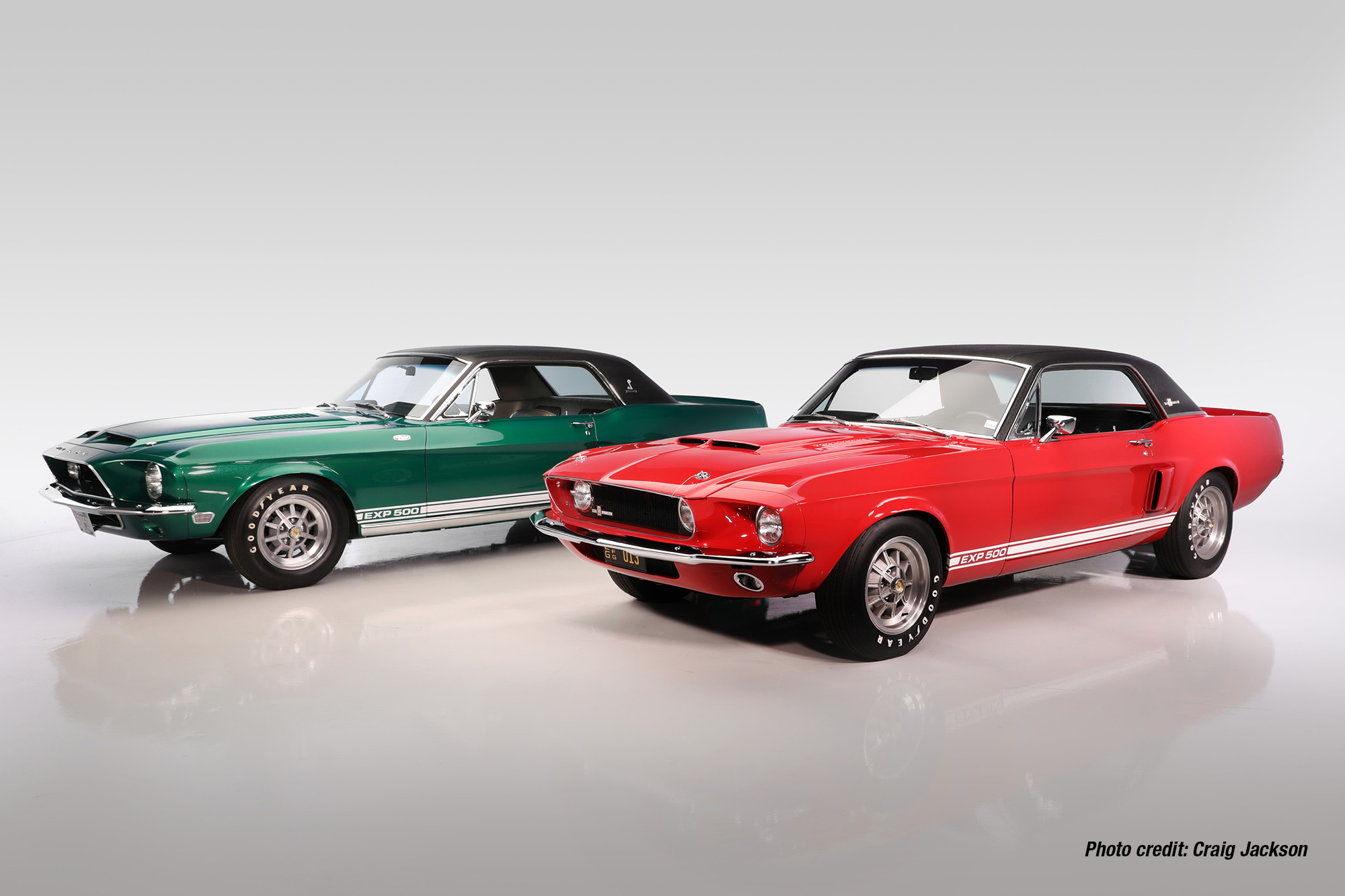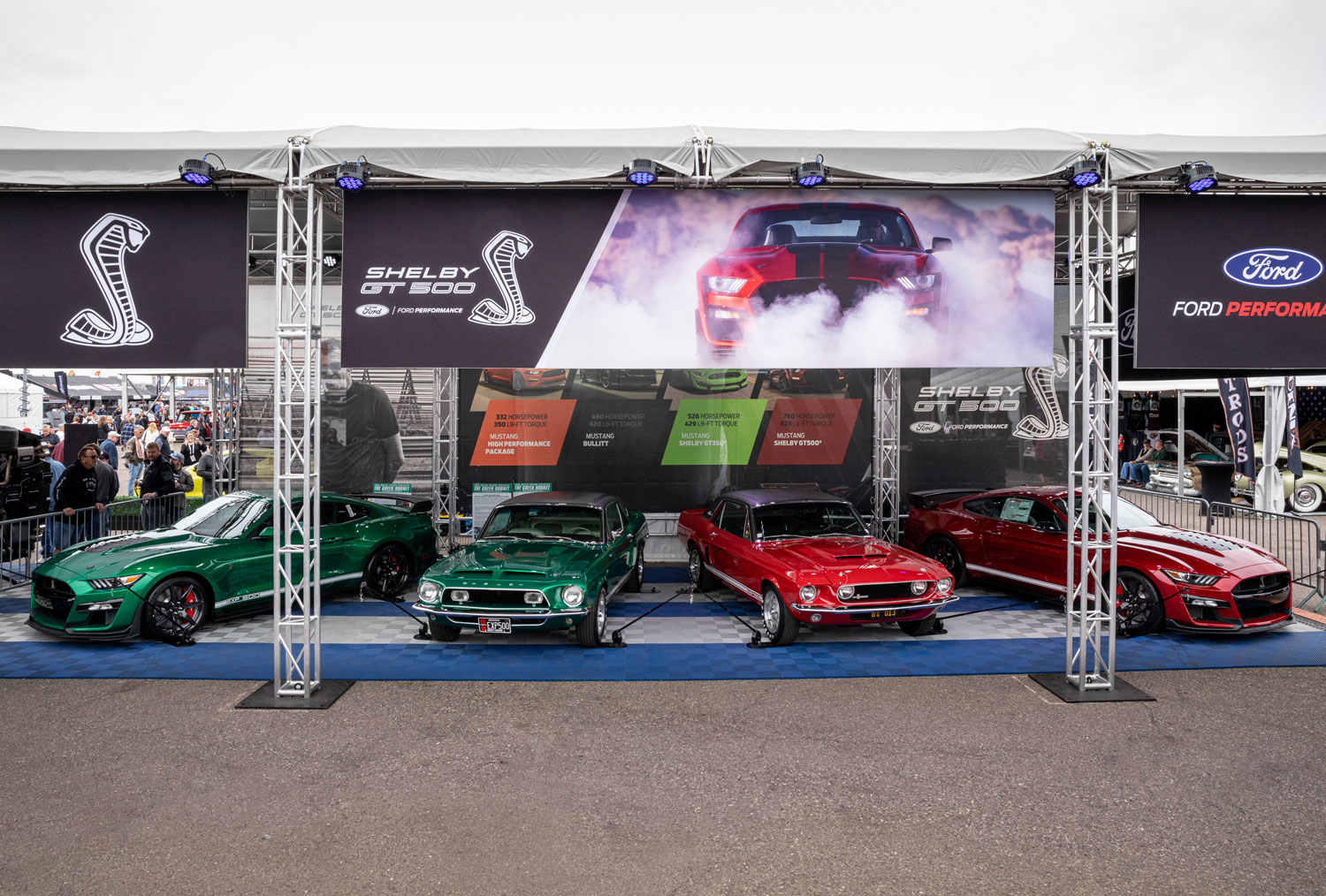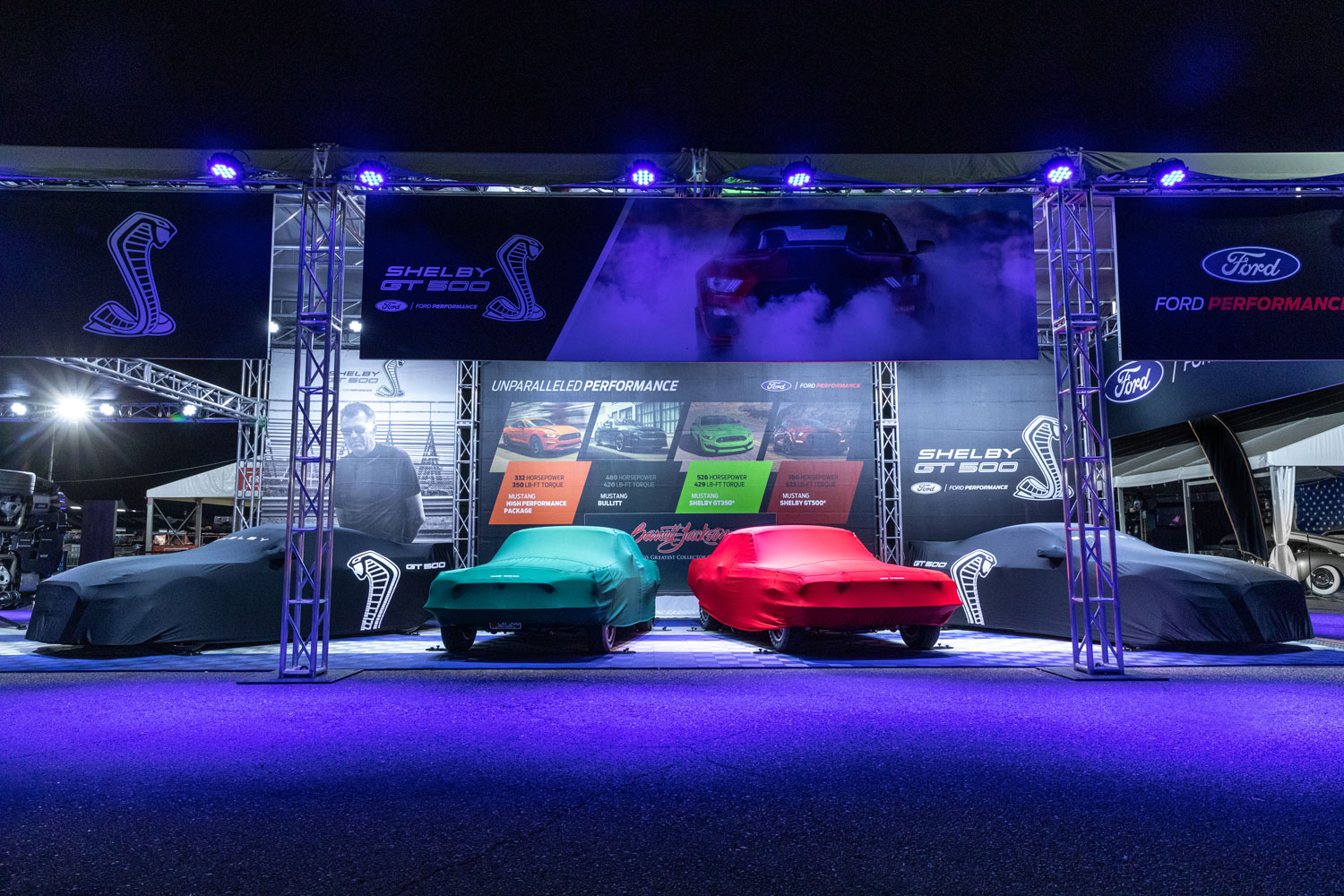Media | Articles
Urban legend “Little Red” Shelby GT500 EXP rises from the dead
Automotive history was made in Arizona on Thursday. Or, more accurately, corrected. A pair of Shelby Mustang experimental prototypes, long thought to have been crushed, were reunited in front of a standing-room-only crowd outside Barrett-Jackson’s Scottsdale venue.
Five months after B-J chairman and CEO Craig Jackson unveiled his fully restored 1968 Shelby EXP-500 “Green Hornet” prototype, he pulled the cover off the Hornet’s more significant older sibling, a freshly restored 1967 Shelby Mustang GT500 EXP prototype known as “Little Red.”
“Both cars were thought to be urban legends, but they’re real,” said Jackson, a longtime collector and Shelby aficionado. “We’ve never been able to find a photograph of the two of them together, but they’re together today.”
Little Red, the father of the Mustang California Special, was discovered on March 3, 2018, in a rural Texas field by a team led by Jackson and classic car restoration specialist Jason Billups. How it got there and how they ultimately tracked it down is as complex and incredible as Carroll Shelby himself.
Marketplace
Buy and sell classics with confidence
20200116213759)
In late 1966, the notchback coupe was sent to Shelby American, where a new 1967 Shelby nose, spoiler, and side scoops were added, as well as full ’67 Shelby GT500 independent rear suspension. Later, Shelby updated Little Red to match 1968 models by adding S-H-E-L-B-Y letters across the rear decklid. In addition, the factory 390 V-8 was replaced by a 428 with a Paxton supercharger, mated to a Toploader four-speed. Later iterations included a twin-Paxton setup paired with a C6 three-speed automatic.
This Shelby prototype has been one of the most sought-after and elusive vehicles in postwar history, much like the Bullitt Mustang—yet also very different.
“Some people knew that the Bullitt Mustang existed and where it was, but nobody knew Little Red was out there. Even its owner was unaware of its historical significance,” said Colin Comer, author of The Complete Book of Shelby Automobiles: Cobras, Mustangs, and Super Snakes. “For it to be reunited with the Green Hornet, there couldn’t be a better place for it to be. Craig Jackson is so passionate about it; he’s the perfect caretaker.”
Little Red was a legend almost out of the chute. Car and Driver’s Charles Fox drove it fast enough in October 1967 that he was chased back to his hotel by police, a story that was recounted in the magazine’s April 1978 issue. Although Little Red was supposed to be crushed, it somehow escaped certain doom—and discovery. According to Jackson, the car’s previous owner contacted the Shelby American Automobile Club sometime after taking possession, but he was told his car couldn’t be the genuine article since the original was destroyed. Little Red was then driven for several months before an overheating issue prompted removal of the radiator and other parts. After those parts were stolen from the owner’s garage, he parked the Shelby in a field, where it sat for decades.
20200116213120)
20200116213129)
20200116213232)
Jackson and Billups, already knee-deep in restoring the Green Hornet, decided to search for Little Red in the hopes of bringing them back together. Armed with the VIN number and following a few breadcrumbs, they somehow managed to track it down. “Locating Little Red was tantamount to finding the proverbial needle in a haystack,” Billups said at the time. Barrett-Jackson president Steve Davis summed it this way: “It’s like catching lightning in a bottle, not just once but twice.”
Among the attendees at Thursday’s unveiling was Aaron Shelby, Carroll Shelby’s grandson, and 79-year-old Walter Nelson, who worked for Shelby American and was responsible for Little Red’s engine components. Nelson also worked on the car’s interior.
“A man asked me to build something, and I said, ‘Get the hell out of the way then,’” Nelson said. “I didn’t know it was going to be historic, and I didn’t care. I just built things and fixed things. I did my job.”
After Jackson announced that he’d found Little Red, doubters came out of the woodwork. One of them was Nelson’s own son Bill, who’d been told the car was long gone and, considering who his father was, he had no reason to believe otherwise. Bill left a comment on Facebook disputing the car’s authenticity and mentioned where he got his information from. Within 15 minutes the phone rang, and soon he and his dad were on their way to meet Jackson and check out the car.
“I hated that car actually,” Bill said. “I was a kid then, and that car was the reason that my father was transferred from California to Michigan and my family moved away from my grandparents. I wasn’t happy about that.” The Nelsons now live in the Phoenix area, so they didn’t have far to travel to be reunited with Little Red.
20200116213827)
“As soon as we walked in, my dad immediately said, ‘That’s Little Red,’ but I wasn’t sure yet,” Bill said. “Then I sat inside and looked at the dash, and I knew. It all came back to me.”
After starting up the four cars on stage—the two prototypes and their modern iterations—Jackson posed for photographs with all those involved and encouraged anyone with additional information about the cars to reach out at www.shelbyprototypecoupes.com.
Jackson said documentary films about each car are in the works, and they’ll be broadcast on a major network upon completion. Thursday, however, was Little Red’s day in the sun, even with overcast skies.
“The DNA of all modern Shelbys begins right here,” Jackson said. “History has come back to life.”

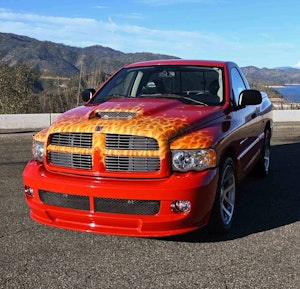
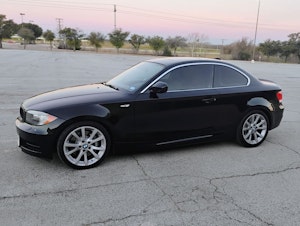
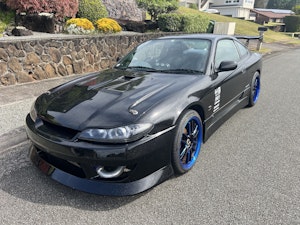
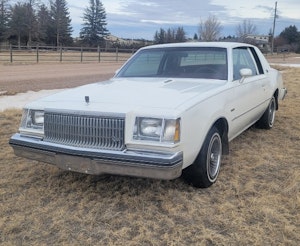
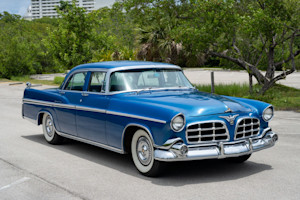
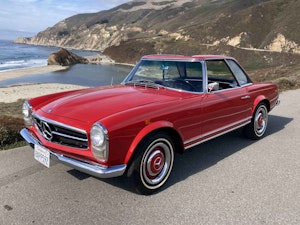
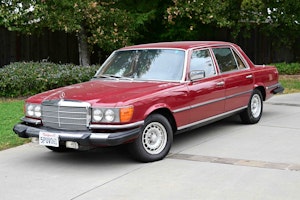
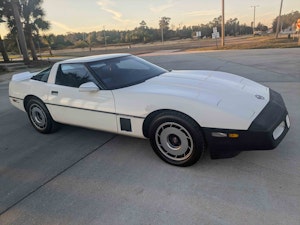
20200116213059)
20200116213137)
20200116213153)
20200116213159)
20200116213206)
20200116213213)
20200116213239)
20200116213246)
20200116213301)
20200116213254)
20200116213223)
